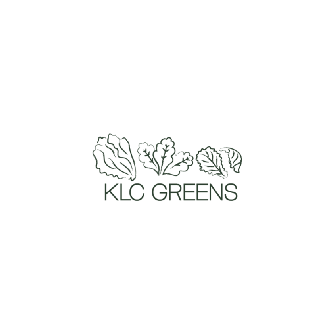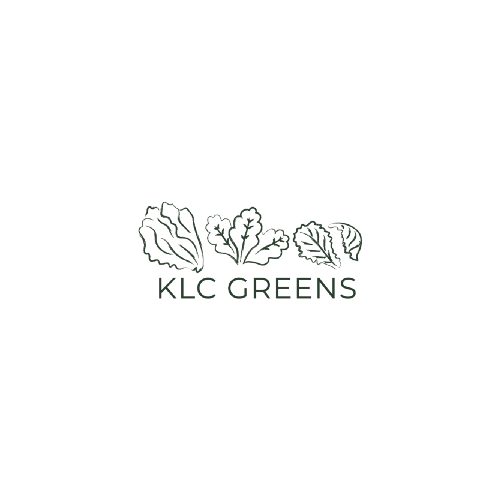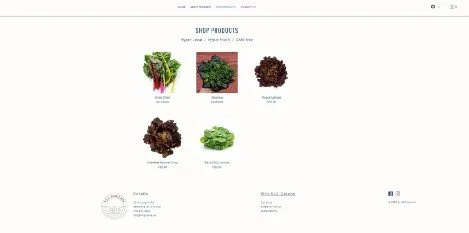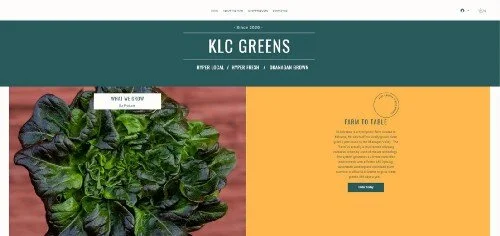Things To Think About Before Purchasing A Freight Farm
Connor McGoran
In this article, I will detail all the steps, hurdles, and bureaucracy I endured trying to start and bring a Freight Farm into my local community in Canada. While this may not be the same experience for everybody, I will share what I learned and how I failed at starting a Freight Farming business. This process took me approximately three months to go through. The goal of this article is not to dissuade anyone from trying to start a Freight Farm business but to learn from my shortcomings so that the next individual who embarks on this journey will succeed and know what to expect.
Background
I had just finished my degree in Technology Management from NAIT and the early phase of COVID-19 hit which caused community lockdowns across Canada. During the lockdown, I stumbled upon an article from the MIT Technology Review about a unique way to grow roughly 1.5 acres of food in a retrofitted sea-can using LEDs, hydroponics, and specialized HVAC. My curiosity got the best of me and I asked myself if there was a feasible business case for this type of innovation in my home town. This to me seemed like a well-timed idea due to the broken food supply chain across North America due to COVID-19. With further research, I even found that Elon Musk’s younger brother Kimbal used multiple Freight Farm’s to grow his produce for his restaurants. This led me to read more to see if this magic box would be feasible from an economics and business perspective.
Step 1 : Research
The first thing I did was reach out to Freight Farms in Boston where I had a wonderful experience dealing with the Freight Farm Team. They gave me all the documentation I would need to get started detailing the cost of a brand new unit to be 115,000 USD. I also reached out to another company called FarmBoxFoods to see how their technology differed and what their price was set at 125,000 USD. Due to the high cost and the poor CAD-USD currency conversion (1.4), I looked at purchasing a used Freight Farm from the iGrow Group which re-sells used units online.
LGM Freight Farm Operating Costs
Step 2: Business Spreadsheet
I then created my own spreadsheet-based upon the numbers provided to me by the Freight Farm team and my own research to see if it would be feasible from a business perspective. There are some numbers included in this spreadsheet which I will talk about later in the article.
LGM Calculator Tab 1
LGM Calculator Tab 2
LGM Calculator Tab 3
After building my spreadsheet, I determined that the only way for me to make money and pay off any debt in Canada with the CAD-USD conversion rate was to purchase a used unit through the iGrow Group. Different brands of hydroponic growing sea-cans and units ranged from 55,000 USD to 150,000 USD depending on the model and year.
Step 3: Business Plan
After creating my spreadsheet I called other Freight Farmers within Canada to ask about their experience running a company. The expertise of people who already operated their own Freight Farms was extremely insightful because they were able to share their difficulties, what they learned, and what I should anticipate. This helped me write a modified version of the business plan below. I decided to call my company KLC Greens.
KLC Greens Business Plan
KLC Greens is a hydronic farming company that would provide the highest quality local produce to the local industry in Canada 365 days a year! It has the capability to turn around over 1000 heads of lettuce or other leafy greens after a 6-week initial phase.
Demand for local produce is booming and KLC Greens would be perfectly positioned to increase the availability of “hyper local” foods for our customers. By utilizing the very best hydroponic farming technology, Freight Farms’ Leafy Green Machine would grow high value cash crops year-round with consistent high quality that is not possible with outdoor farming in the local community.
Marketing Strategy:
KLC Greens marketing strategy would focus on selling their produce to wholesale grocery stores, a retail CSA program, and local restaurants that want the best produce available year-round. KLC Greens has been in contact with different local grocery stores that have shown interest to our product.
Company Description
KLC Greens is a hydroponic farming company that would provide fresh produce to the local vegetable industry in Canada. We will grow different lettuce varieties for restaurants, wholesalers, and retail through CSA that would aim to support the growing local food movement in Canada.
Our world is changing. More people than ever are now living in tightly populated, urban areas, and there’s an increasing demand for locally grown and sustainably produced food. People want to know the story behind the meal on their plates. And even city dwellers want their food to be fresh and full of nutrients, not pre-packaged and shipped from thousands of miles away.
Our climate is also continuing to evolve. Extreme weather conditions are becoming more common, and land and water are becoming scarcer. Large-scale food production and distribution has had a significant impact on the earth’s ecosystem, and it’s continuing to affect our water levels and biodiversity.
Transparency is key to understanding where and how food is produced and KLC Greens is committed to improving transparency in the produce industry by growing ‘hyper-local’ produce in one of the most innovative hydroponic system available, Freight Farms’ Leafy Green Machine. Growing in the Leafy Green Machine enables us to provide unparalleled transparency in all operations from seed to harvest and provides our customers with the certainty that they are eating, receiving, buying Okanagan produce grown via the best agricultural practices available.
Our Product
We will initially grow different lettuce varieties and sell it to wholesalers and restaurants at an expected price of 2$ per head of lettuce. This type of cash crop takes 6 weeks to reach maturity and we estimate harvesting 4044 heads per month. For details on harvest volumes, see Appendix A for revenue calculation data and assumptions.
Our lettuce is hyper-local, meaning that our lettuce is grown in the community where it will be consumed, and is thus considered a premium and differentiated product by the market, commanding a higher price point than even organic foods. This differentiation is what enables us to command the higher price of 2$ as opposed to the general wholesale price of 1.50–1.75$.
Market Breakdown
KLC Greens will specifically target high-end restaurants in the Canada area. Our target customers are chefs and restaurant owners in the farm-to-table movement who already provide information to customers about their sourcing policies and chefs and restaurant
owners in the ethnic cuisine space who require specific fresh greens for their dishes that are not available year-round through traditional farming.
Our competitors in the restaurant industry include direct competition from other local farmers, and wholesalers who source exclusively from local farms but are constrained by seasonality, and indirect competition from larger wholesalers who bring in low cost produce from around the world and in all seasons. KLC Greens will compete by providing “hyper local” produce to the restaurant industry regardless of season.
KLC Greens plans to sell its lettuce into the wholesale market in Canada. We will target smaller wholesale companies who specialize in local produce as opposed to working with the larger, national companies where we will struggle to meet sufficient volumes to be a relevant partner.
Our competitors for local wholesale are other local farmers growing vegetables and different varieties of vegetables (traditionally or hydroponically). During the summer months, traditional farmers will be KLC Greens greatest competition as the supply of local Lettuce is significantly increased and the price is driven down. During the non-summer months, regional, large-scale hydroponics producers are the greatest competitors for KLC Greens. In both instances, KLC Greens will rely on its freshness and consistent availability to appeal to our wholesale partners.
KLC Greens will sell its produce in farmers markets in the Canada area. We will target markets in middle to upper-middle class areas in order to gain access to consumers who are dedicated to eating fresh, local produce and have the disposable income to purchase our premium Lettuce.
Our competitors fall into two categories, direct competitors from the farmers market community and indirect competitors from outside the farmers market. To date, KLC Greens does not know of another hydroponic farmer participating in farmers markers in the Canada area, meaning that our primary direct competitors will be local farmers growing Lettuce in the traditional way. Outside of the farmers market, our competitors are traditional food retailers who may or may not stock local Lettuce. In both instances, KLC Greens has an advantage as we can differentiate on freshness and availability all year.
KLC Greens will also target middle to upper-middle class customers who already participate in CSA programs and demonstrate a commitment to eating local produce.
While most of KLC Greens competitors are not “hyper local” producers, it is worth briefly discussing the different methods of urban farming that may eventually enter the market as direct competitors. The four main competitors to KLC Greens Leafy Green Machine growing method in the urban farming space are indoor warehouses farms, urban greenhouses, rooftop farms, and small plots of land transformed into farms. Each have their benefits, however KLC Greens firmly believes that the Leafy Green Machine provides the best combination of protection from natural elements, cost effective production, and reliable crop yields that will make urban farming a profitable venture now and into the future.
Competitive Advantage
KLC Greens main competitive advantages are the farming technology we will use to produce our lettuce and the support of a network of small business hydroponic farmers.
We are in the process of purchasing a Leafy Green Machine from Freight Farms to use as our primary farming tool. A Leafy Green Machine is a turnkey hydroponic farm built inside of an insulated shipping container, enabling it to produce fresh vegetables in any climate for a full 365 days per year. To help ensure success, the Leafy Green Machine is equipped with sophisticated environmental controls which allow KLC Greens to easily grow consistently high-quality lettuce while simultaneously eliminating the guesswork inherent in traditional farming. The Leafy Green Machine only requires 20 hours a week to operate.
In addition to the benefits of the Leafy Green Machine itself, our purchase of a Leafy Green Machine provides us with access to the many resources Freight Farms offers to its extensive and ever-growing network of small business farmers. Freight Farms’ commitment to KLC Greens success includes:
· Comprehensive in-farm and online training
· A resident plant expert who is available to all beginning farmers
· Monthly shipments of customized nutrients and seeds
· Software designed to optimize harvest yields and allow remote monitoring of crops and control of the Greenery
· And most importantly, access to Freight Farms’ very active network of small business farmers who are available for assistance and advice
The strength of the Freight Farms network cannot be overstated. Each small business farmer has faced similar business challenges to those that KLC Greens will inevitably face. By leveraging the solutions of fellow Greenery farmers, KLC Greens can significantly reduce the risk associated with a new venture and move through challenges quickly and successfully.
Marketing and Sales Plan
KLC Greens sales plan is to target Restaurants, Retail (CSA) and wholesalers. Our company will target chefs and owners of high-end farm-to-table restaurants who have already demonstrated a desire to provide customers with transparency in food sourcing. Our Retail CSA program will target middle to upper-middle class customers who already participate in CSA programs and demonstrate a commitment to eating local produce. KLC Greens will also target wholesalers who are looking for consistent quality produce that can be supplied year-round.
KLC Greens has discussed our hyper-local lettuce with Natures Fare, Sysco, and Valley Green Foods and they are very excited about the possibility of buying year-round, local lettuce.
In order to obtain customers KLC Greens will implement the following marketing strategies of utilizing digital marketing tools, word of mouth, social media campaigns, and attending local regional industry events. KLC Greens will use a combination of digital marketing, via add words and a company website, and networking at industry events to identify and network with farm to-table restauranteurs, grocery chains and wholesalers. We will operate a booth at local conferences to better spread the word about our hyper-local lettuce, give potential customers the opportunity to try the lettuce for themselves, and direct further inquiries to our website for more information about the benefits of hydroponic produce.
KLC Greens will have a variety of different packaging for products depending on industry or consumer needs. If wholesalers require clam shell or hard plastic containers for packaging, our business will source that out. KLC Greens will package its lettuce in grams or kg in either rectangular clamshell packages or hard plastic containers for it’s wholesale partners.
Management Team
Key Partners:
· Accounting/Tax Partner: TBD
· Legal Advisor: TBD
· Insurance Provider: TBD
Use of Funds
KLC Greens is requesting $150,000 CAD for the purchase, transportation, and installation of a Greenery and for the cash flow necessary to get started. In addition to the requested loan amount, Farm Credit Canada has granted KLC Greens 80% of the funds to purchase the Leafy Green Machine. The 80% of the funds provided by Farm Credit Canada would be paid back to the loan.
A detailed breakdown of our planned use of funds is below:
· Greenery Purchase: $88,000
· Greenery Transportation: $9000
· Customs Tax (5%): $4375
· Greenery Installation: $3000
o Leveling: $1000
o Electric: $1000
o Plumbing: $1000
· Training: $4000
o Cost of training: $2500
o (if applicable) Cost of flight to Boston: $1000
o (if applicable) Cost of hotel in Boston: $500
· Business Materials Purchase: $1000
Financial Projections
KLC Greens financial projections are derived from the proven operations and profit models of fellow Leafy Green Machine small business farmers. Based on their experiences, collected, and consolidated by Freight Farms, we have constructed the following financial projections forecasting our first five years of operations.
Key Assumptions of Projected Financial Statements
· One month is 31 days (the Leafy Green Machine operates every day) or four weeks
· Year 1 begins on the day of Leafy Green Machine purchase
· Tax payments are not included in our calculations
· KLC Greens is a cash-based business so we will not offer terms to our customers and pay our bills upon receipt, therefore we have not calculated for Accounts Receivable or Accounts Payable
· We have elected to exclude inventory from our asset calculations however, there will be a nominal amount of work-in-progress and materials inventory at any given time
Step 5: Finding a Freight Farm
After creating my business plan I was ready to try and find a used unit that would fit within my budget through the iGrow Group. The team at iGrow was also super helpful and narrowed down the best unit that was close to where I lived to reduce shipping costs and help pair me with another business owner. I had to WhatsApp call the seller multiple times to ask questions and to inspect the unit due to COVID-19 as I was unable to cross the border. I was able to put a down payment on the unit until I secured further funding.
Step 6: Finding Capital (Funding)
In order to fund my business venture, I had to try and find different avenues for funding which led me on a rabbit trail for approximately two months. At the time of trying to obtain funding I was 22 and had no assets in my name but actually had little difficulty in getting approved funding. The only problem that occurred was that no bank in Canada would give me a bridge loan to bring the used Freight Farm into Canada. I called every single bank over the span of two months that I could possibly think of and tried to brainstorm creative ways to bypass the process. My seller was growing impatient so this led the seller to agree to send the unit across the border on the condition I would pay the remaining 90% and provide letters from the different financial institutions that I was approved for funding. I was able to obtain funding three different financial institutions called Farm Credit Canada, Community Futures, and RBC. Farm Credit Canada is a farm lender that is subsidized by the government which has a special young farmers loan for ages under 40 that can approve loans of up to a million dollars. Community Futures is a community-based organization that helps aspiring entrepreneurs within the Okanagan and RBC is a bank within Canada.
I reached an agreement with Farm Credit Canada after dealing with their business analyst’s and scrutinizing my business plan they would grant me 80% funding for the Freight Farm once it crossed the border, Community Futures would provide the operating expenses and other equity, and RBC would provide me a business account with an operating line of credit. Once I obtained the letters from all three financial institutions I was able to bring the Freight Farm across Canada.
Step 7: Logistics, Logistics, Logistics
Growing up in the Okanagan Valley in Canada which has an abundance of agriculture land and plenty of farming, I did not think I would have such a difficult time finding a place to put the Freight Farm. I reached out to numerous farmers, tried my contacts, and tried door knocking to try and find some land. What I found was that majority of old farmers did not want the hassle of having this on their property, did not understand the technology or it was not worth their time for the money. Being on a budget and knowing where I wanted my profit margins it was proving to be quite difficult. The Leafy Green Machine I was purchasing also required a certain power supply, access to water and it has to be leveled. If the land did not have these pre-requisites I would have to pay to have a sub-meter installed, the piping for water, and a contractor to have the unit leveled.
I ended up using a service called Young Agrarians which is a farmer educational resource network for new and young ecological, organic, and regenerative farmers in Canada. They had a local representative that assisted me with their land matching program and helped guide me through making a lease agreement. I ended up finding a landowner by door knocking who would allow me to put my Freight Farm on his land for a reasonable price and had the Young Agrarian Organization help build the lease agreement.
Step 8: Incorporation and Accounting
Due to my limited expertise and from the wisdom of other mentors I thought it would be best to get the advice from an accountant and lawyer to help me best set up my business. I know from other experiences that the CRA is not the most forgiving and can cause major headaches if you do not submit the proper paperwork. I consulted my local accountant where he advised me on the pros and cons of doing a sole proprietorship or incorporating and helped draft me a letter to my lawyer. I chose to incorporate and then sent the letter to my lawyer who set up the business to best suit my companies needs. A few weeks later KLC Greens was approved and incorporated.
Step 9: Website and Logos
While I was trying to find suitable land and was waiting for my business to be incorporated I decided to design my company logo and build a website. I utilized Fiverr as a platform to build my logo as it cost 60 CAD and was created within 48 hours. These were some of the designs created within 48 hours.
To build my website I decided to go through Wix. I used Wix because it was the most reasonably priced 25 USD and it had the best functionality for what I needed. I was able to create this website.
Step 10: Apply for a City Business License
Applying for a city license was an easy process as there was an online portal where I had to describe my business and what I was planning on selling. The estimated time to obtain a response was approximately 48 hours. I contacted my local city a few months prior to ask if there would be any concerns with having a Freight Farm within the city limits. So I expected my business license to be approved without any obstacles.
Step 11: Customs Broker/Shipping/Crane
While completing the last few steps I had to find a customs broker that would deal with the transaction so that the Freight Farm would come across the border without any difficulty. I also contacted numerous shipping companies with the IGrow Group to find the best deal. Once this was secured I could then schedule the crane companies in the seller's city and my home town. Now that everything was set, my Freight Farm was scheduled to come in three weeks' time.
Step 12: Bureaucracy
My assumption that obtaining a city business license was going to be easy proved to be wrong due to my city’s bylaws and bureaucracy. My application was forwarded to the agriculture department, the city planner, and the building inspector where I was met with the following response. I had numerous conversations about if there was any variance that could happen and how someone at the city three months ago told me they did not see anything wrong with my Freight Farming idea.
Hi Connor,
I was forwarded your email to help answer. The Planning Department and ALC both allow hydroponics to be grown on site (A1/ALR), however, the sea-can is not permitted. We only allow sea-cans/shipping containers on a permitted basis if they meet BC Building Code, which will require an engineer or an architect to make the sea-can structural sound. Sea-can’s are not permitted structures and won’t be given a Building Permit unless they are altered to meet the BC Building Code.
Please let me know if you have any other questions, I’m happy to help.
This was my response to the email above
To whom it may convern,
I talked with an associate at the city of Canada about three months ago about my business plan and any concerns I should foresee in the future, this associate saw no problems with my business and freight farm being in Canada. When I went to apply for a business license a week ago I ran into a few hurdles with the City about the freight farm meeting the BC Building Code and certain bylaws and obtaining a building permit. My understanding was that this container would be deemed a temporary unit on ALR land and should not need a building permit.I have reached an agreement with the business license team at the City and planners that this will be deemed a temporary structure for 6 months (as it can be moved readily at any time).
My container will be delivered in the next two weeks and I did not foresee these hurdles and I am looking for guidance on what to do next. I am a young entrepreneur and have taken a loan to start this business and would love to reach an agreement with the City and make the necessary legal changes to make my business work. I really appreciate how supportive the City has been and the amazing staff I have dealt with.
I have attached a pdf describing the leafy green machine, as well as the bylaw pdf on steel containers.
Here was the city’s reply;
Hi Connor,
I see from the web site link that you provided that this product comes from a USA based manufacturer. Do you have any support documentation from the supplier/manufacturer that references a Canadian standard for the electrical system, water system and building standard(s) that these are built to? We will require this information as part of a Building Permit & Plumbing Permit application along with a site plan showing where this container will be installed on the property
The bulletin that you have copied and referenced as allowable under exception, clearly identifies the exception for the use of the container as storage and not as an occupied/semi occupied building for the production of plants with a dedicated water system and electrical system. The British Columbia Building Code (2018 edition) is the Provincial standard that needs to be meet once the structure is being used as a building, which is what you are proposing. The A277 standard in BCBC 2018 is for factory built units, similar to modular homes that are factory inspected for compliance during construction and certified as compliant. The storage container can be stored on the site if approved by City of planning staff for 6 months, but would not be allowed connection to city water or electrical without meeting the minimum standard set by BC BC 2018. I would suggest that you reach out to the modular factory representatives to see if they can have a factory inspector come to do an on-site evaluation of the container unit to certify it or help provide information to cross reference Canadian to the USA based standards, so that you can apply for a building permit. https://www.kelowna.ca/homes-building/agricultural-land/dwellings is the link to the requirements for Building Permit application. A plumber will be required to apply for a plumbing permit if/when the building permit is issued and a proper back flow preventor will be required to protect the city water source.
This process may seem overwhelming but is no different than importing a USA built car into the Canadian market. The car would need to meet the standards set in Canada for the car to be registered and used in Canada. If the USA company has built these containers to meet or exceed Canadian standards and can prove this with valid documentation, the application process should be straight forward. An application for building permit can be made at 2nd floor city hall and the permit would be for an accessory building on farm land.
This response led me on another rabbit trail of trying to figure out if the Freight Farm I was purchasing would meet any of the building standards in Canada and so forth. At this point in time, my container was two weeks away, I had already purchased all my supplies for the Freight Farm and was going to sign my lease agreement. Freight Farm’s provided me with the following information below through an email and was able to confirm their shipping containers were ISO certified.
All LGMs are upcycled reefer containers. What this means is that they were previously used to ship produce to and from other countries. Once the refrigeration unit no longer worked, they were decommissioned. We would remove that unit, and retrofit our equipment. I bring this up, because the container itself will likely have some dents and marks from its usage as a freight container. This does not impact the structural integrity of the container at all. We have frequently had these container re-certified to be seaworthy, and safe for use from a structural standpoint. Additionally, the company that would have manufactured the farm has a number of certifications (CE, UL, etc.) that would apply to the actual assembly.
With this information, I called a few inspection agencies about what it would cost to bring the Freight Farm up to the BC Building Code or CSA standards where I got numerous replies saying it would cost thousands of dollars and be a very time-consuming process. On top of this, I would then have to be certified by the local building inspector and make sure the Freight Farm was conforming to any local bylaws.
Where it all went wrong
Just as I was confident about my business and thought I had everything prepared, I was hit with the bombshell from the city about bringing the container up to the BC Building Code and the numerous inspections I would have to go through. Also last minute the landowner of the farmland I was going to lease decided he did not want me on his land anymore or to sign a lease. This led me to call off the shipment 10 days before my container was supposed to arrive which caused me to call of the shipment. From my further conversations with the BC Building Inspectors and other consultants who specialized in shipping container homes, they said that any other Freight Farms located in BC that were not CSA approved or up to the BC Building code were illegal. They further elaborated that the only reason they were operating was that the local city or bylaw was turning a blind eye. This was the turning point where I had to decide if the current risks were worth taking with the knowledge that it would cost much more than expected to get the Freight Farm certified and if I didn’t it could be shut down by the city. I went back to crunch the numbers and realized I could not financially risk having the Freight Farm nonoperational for a few months due to the loans payments from the bank. I could not wait to have my container certified by the proper governing bodies and inspections to take place. This led me to painfully decide to not pursue my business plan anymore. I had to contact my seller and the IGrow Group about my situation and unfortunately, three months' progress was now void.
Where I Failed
I did not properly do my due diligence in contacting all the necessary channels in my local city to ask about the local bylaws. I trusted one individual's opinion at the city who did not have the proper knowledge to give me the advice that I relied on.
I did not think of the construction standards of the Freight Farm at the early phase of my business plan. This led to more hurdles when I was asked for information by the city.
I put a 10% down payment on the container before I had secured funding from other financial institutions. This caused the process to take longer than expected and caused my seller to wait over two months to get my finances in order only to have to cancel last minute.
Due to my limited assets, I had to borrow from numerous financial institutions to obtain the financial capital to purchase the Freight Farm. In the last two weeks, before my Freight Farm was expected to arrive, RBC called to inform me that there was too much conflict between the financial agreements between Farm Credit Canada, Community Futures, and RBC. This caused me to have to re-negotiate all my letters with my lenders delaying the purchase further.
I did not sign a lease agreement before arranging the shipment of the container causing the landowner to back out the last minute.
I purchased supplies for the container before it arrives.
I rushed the entire process in three months, leaving little time to carefully think out everything.
What I learned
Before starting the process make sure you know what your city’s bylaws are and talk to a few local representatives to make sure the information you are being told is true.
Read the bylaws to ensure your Freight Farm is up to local standards.
Obtain financing early on before contacting a seller if you have limited assets or can only afford a small down payment.
Make sure that if you borrow from numerous financial institutions there is no conflict of interest between them if they require equity of your Freight Farm until the loan is paid off.
Sign a lease agreement from a landowner, do not go off of their word.
If you want to disregard the city bylaws the best scenario would be to know someone who has land or own it yourself. That way you can hide the Freight Farm and won’t have any complaints, thus reducing the risk of your business being shut down in British Columbia.
Have more certainty of your business before purchasing supplies, creating logos, or a website.
Leave more time to think through each step, because once you are in the chaos it is harder to take a bird’s eye view of your business
Do not be dissuaded by hurdles that come out of nowhere, this is a natural occurrence in business. Learn how to navigate them and reflect on how to make sure they do not happen again. I went through what seemed hundreds of hurdles and learned how to navigate them. Even though I had to decide to give up in the end it was due to huge financial risk and my limited access to capital. The risk of not running my business for four months while making bank payments and the uncertainty of the financial amount to bring the Freight Farm up to BC building code were my deciding factors.
You learn 110% more when you stick your neck out and go through the process. Going into business is not easy and requires a certain mental fortitude and resilience.
Know when to give up and know when to keep on persevering. At certain times you may feel like giving up but that is also where the most learning can be achieved and later on you’ll laugh at the thought that you almost gave up. The flip side is don’t let your ego cause you to make bad business decisions, use logic, and periodically review your business plan and current state of affairs.
Even though I failed to start my company the amount of learning I went through the last three months was invaluable.
Conclusion
My hope is that this article will help the next entrepreneurs who embark on purchasing a Freight Farm and help them build off of my experience. I still believe there is a strong business case for a Freight Farm within my community but currently, I lack the financial capital and political power to cut through the bureaucracy. I hope my three months of trials and tribulations will save you time or help you in your journey.
WRITTEN BY
Connor McGoran
Edumacated Writer, Aspiring Blogger
Technology Farming Hydroponics Farming Startup Entrepreneurship















